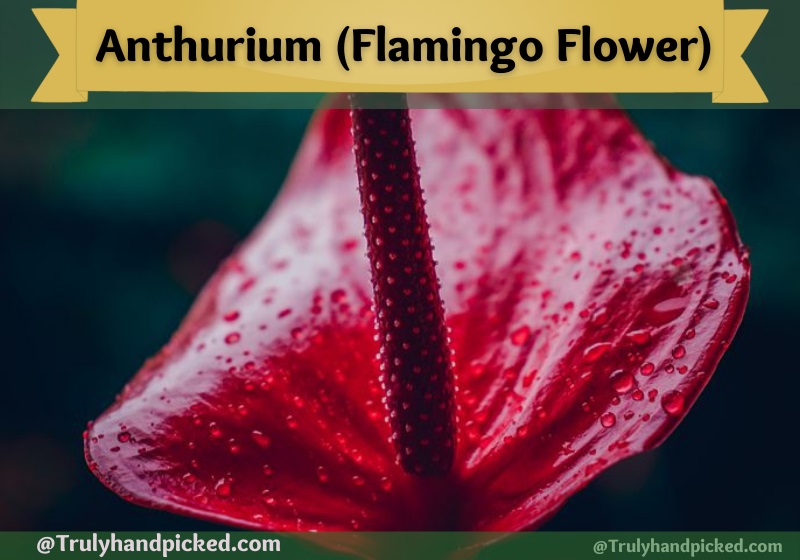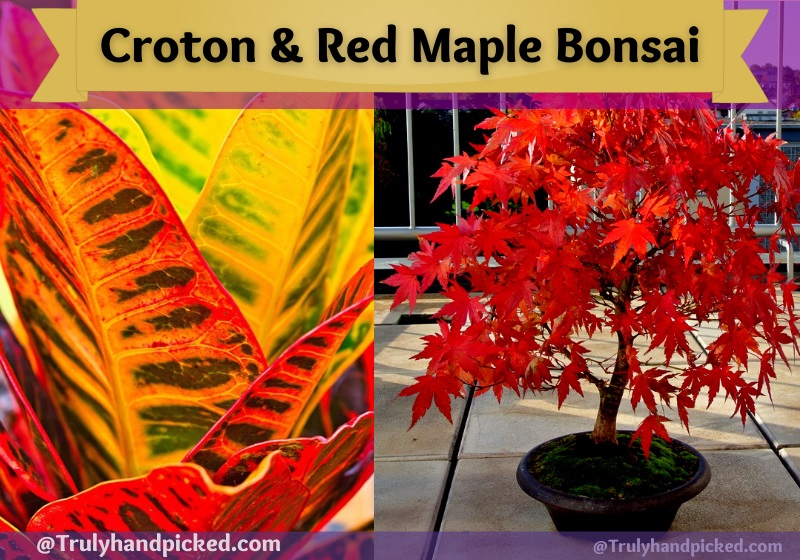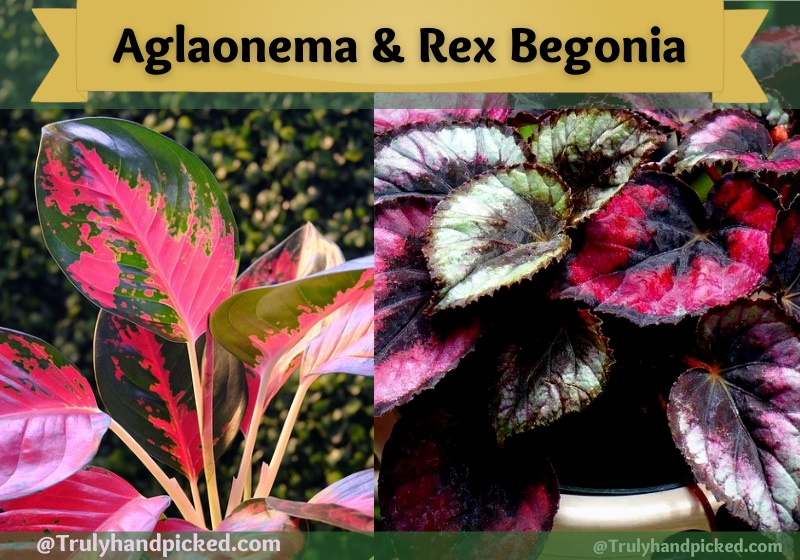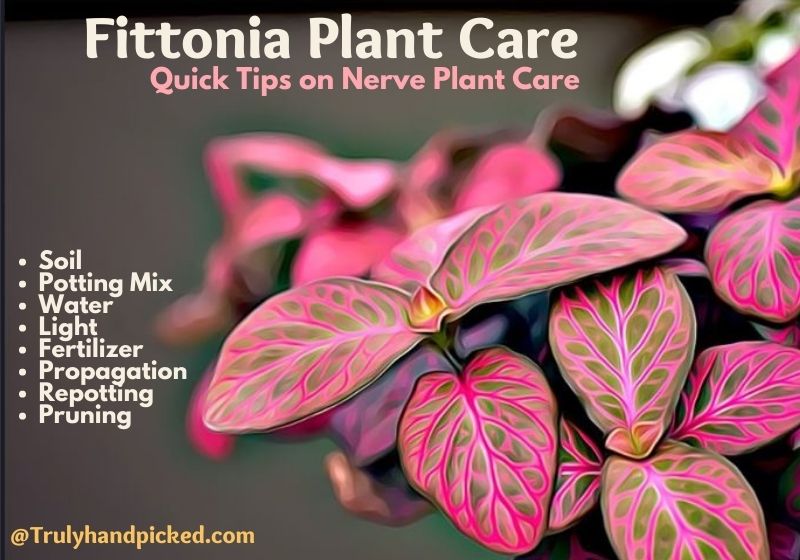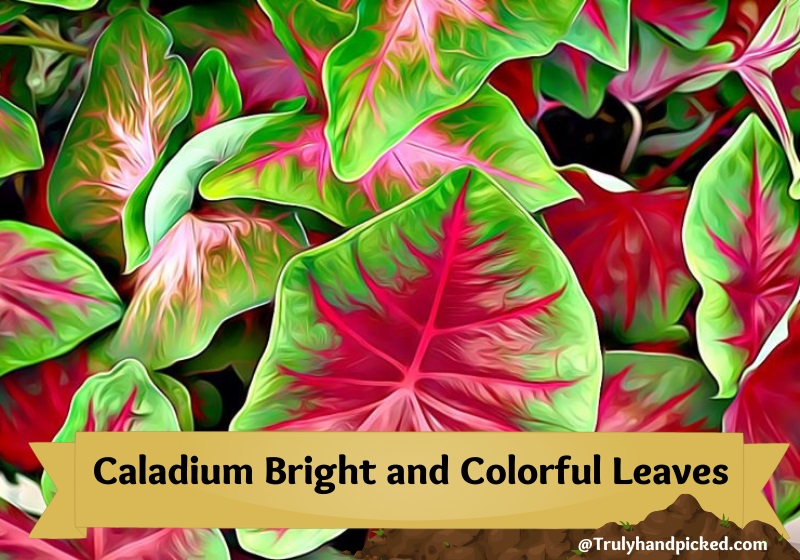If you are looking to add some color to your indoor interior then, try out some red foliage plants instead of expensive showpieces. These red leaves indoor plants will renovate the whole look of your house with a tropical touch.
The most exciting part of placing red leaves plants in your house is that you don’t need to wait for the blooming season then!
Red leaf plants: 1 Poinsettia – 2 Coleus – 3 Anthurium – 4 Croton – 5 Red Maple Bonsai 6 Rex Begonia – 7 Aglaonema 8. Nerve Plant 9. Caladium
With these gorgeous red plants, your house will have the dash of nature eternally, once you put those pretty red foliage plants in.
Here we suggest those plants with red leaves, which are extremely easy to grow indoor with moderate care, and climate. Pick any of them to beautify your home most inexpensively and naturally-
Plants with Ravishing Red Leaves for Indoors & Office
Poinsettia (Euphorbia Pulcherrima/Christmas Flower):
About the Plant:
This is a wonderful houseplant to keep in your room. The attractive look of this plant reaches its best form in winter.
About the Leaves:
- The red leaves are bracts, which turn red after a certain while of growing at their modified stage
- Leaves will grow in deep green shade at the beginning then, they produce red bracts
- These red bracts raise a yellowish flower head in the center at its peak form
- Leaves will grow in lobed shapes and pointy ends with smooth edges
How to Care:
- This red foliage plant requires bright to medium indirect light with a moderate temperature between 60-70 degrees F
- Choose superphosphate fertilizer to boost the growth of poinsettia the best
- Prepare loose, organic, sterile type soil for planting this red-leaf plant
- Mix potting soil with well-drain quality, and only water your plant, when the top surface looks dry.
Coleus (Coleus scutellarioides):
Painted Nettle / Flame Nettle – About the Plant:
Coleus is one low-maintenance red leaf plant you should try to grow in your indoor garden. It will add a red shade to your house in the most decent way.
About the Leaves:
- Leaves can grow in many shapes and shades in their grown form, depending on the selected species
- Most of the time this ornamental plant grows leaves in the oval to heart shape with curvy edges
- The square stems make the look of those classy leaves even more attractive
Quick Care Tips:
- Most of the varieties of coleus plant can tolerate the sun but they like sunlight with partial shade
- That’s why coleus is considered one of the best indoor-growing plants with red leaves
- Prepare the potting mix with fully fertile and well-drained soil type
- Choose a nitrogen-base fertilizer with a 15-5-15 or 16-2-15 ratio to keep coleus plants healthy
- Keep the pH level in between 6.0 to 7.0 in rich to moist type soil
- And water the plant moderately, that the soil stays moist but not waterlogged.
Anthurium (Flamingo Flower):
About the Plant:
This plat pauses a striking glace with thick red leaves, growing as a flower on the top of the foliage. The Anthurium plant is also known as a flamingo flower. It can reach 10-12 inches in height at its peak form.
About the Leaves:
- The center leaves of this plant turn red and look like a bloom
- They are spathe, which seems red leaves on this beautiful houseplant
- Leaves can grow in pure red color with a clump long stem in the yellow shade in heart shape
- Each red part spathe of this plant displays an ivory-shaded spadix at the joint of the spathe
Required Care:
- Anthurium couldn’t stand direct sun heat, so, you should provide indirect bright light to the plant
- Maintain a temperature between 24- 28 degrees c throughout the whole growing session
- Make sure the soil is rich in organic matter and keep the pH level between 5.5 to 6.5
- The Soil must be aerated, and well-drained to provide the perfect growth
- And keep the watering level moderate as anthurium plant needs a low-medium amount of water to thrive best.
Croton (Bush on Fire Croton):
About the Plant (Codiaeum variegatum):
Croton plant has red shiny foliage that makes this one an exclusive houseplant around. Indoor species of this croton plant can grow 1-3 feet long.
About the Leaves:
- Croton doesn’t grow complete red leaves, but a predominantly red hue over reddish-green foliage
- Leaves grow large with a leathery red coating in the liner to an oval shape
- Leaves could have smooth to lobed margin and sometimes even wavy to curvy spiral too.
Red Leaf Plant Care:
- Give your indoor croton plant bright indirect light with partial shade for 6-7 hours a day
- Loose well-drained soil will let your croton plant thrive the best
- Try time-released low-nitrogen base fertilizer with a ratio of 18-3-6 PK
- croton plant needs moderately acidic soil with a pH level in between 4.5 to 6.5
- Try to provide 1-inch water to your indoor croton plant per week to make the roots perfectly healthy
Japanese Red Maple Bonsai (Crimson Queen):
About the Plant (Acer Palmatum Dwarf):
This is one more wonderful plant with red foliage that grows easily indoors. Red maple bonsai is a dwarf Japanese houseplant. This plant is appreciated for being a Feng-Sui object, besides its classy appearance.
About the Leaves:
- Leaves of this plant grow in hand shape with exactly five piercing lobes
- Leaves can reach 2-5 inches at the peak and turn red after reaching the highest form
- You can find that leaves of red maple bonsai can grow in red to a reddish-purple shade at the end
- Leaves are small of this plant but provide an eye-catchy glace to your house while grown fully.
Required care:
- Pick well-drained bonsai-friendly soil type to grow red maple bonsai indoor
- Make sure you pick sandy acidic soil with a pH balance between 5.5-6.5
- Pick organic liquid fertilizer rich in nitrogen content for your red maple bonsai
- Water your red maple bonsai indoor plant after every 2-3 days in the beginning and then once in a week.
Are you a green hand and looking for decorative and green climbers? learn more about these fruiting vines for your garden.
Rex Begonia (Painted-Leaf Begonias):
About the Plant:
This is one more beautiful houseplant that can grow easily indoor in a planter. Rex begonia is also known as ‘Red kiss’ and can grow 1 foot long.
About the Leaves:
- Leaves of this plant grow in the deep red shade with curvy edges
- The heart-shaped leaves grow some moist striking silver coating over the foliage
- Some of the species of this plant can cultivate seashell swirl shaped leaves in red shade
- The maroon-colored veins over the foliage provide the leaves with look more dramatic resemblance.
- This plant is toxic to pets so keep your dogs and cats away from this plant.
How to take care:
- Give your indoor rex begonia plant fast-draining soil with a pH balance of 5.7-6.2
- Rex begonia plant-like soil rich in fertilizer like peat moss, perlite, or vermiculite
- This plant thrives best in bright indirect sunlight
- Rex begonia need lots of water to grow healthy reddish foliage
- Water your plant regularly in the summer and reduce it to once in 2-3 days in other seasons
- And try to give your rex begonia plant water-soluble fertilizer to make healthy
Red Aglaonema:
About the Plant:
Some species of aglaonema plant grow beautiful red leaves. This is one tropical houseplant that grows best in a humid climate.
About the Leaves:
- The leaves of this plant grow big with a greenish border
- Veins on the leaves are also red over the red surface but they look stunning to see
- This plant grows lance to heart-shaped foliage that reaches 4-12 inches long depending on their species
- Edges of the leaves are normally plain but turn a bit curvy after reaching the fully-grown form
Preparation and care:
- Prepare a well-drained peat moss-based acidic potting soil to grow aglaonema plants indoor
- Mix a bit of perlite in soil and keep the pH level between 5.6 to 6.5
- This plant needs bright indirect sunlight to grow best
- Use liquid slow-release fertilizer like fish emulsion for growing aglaonema plant
- And water this plant soberly, only when the top surface of the soil turns 50% dry after one-time watering.
Red Nerve Plant / Fittonia
Get detailed ideas on how to care for nerve plants (Growth, care, watering, and propagation).
Red Caladium – Fancy Leaf Caladium
This plant grows big leaves with an attractive red hue. Learn more about the caladium plant’s growth and care.
FAQ: Red Leaf Plants
Why Some Plant Leaves are Red?
Plants produce red leaves because of the existence of red pigmentation, called anthocyanin on leaves.
Do Red Leaves Trap Sunlight and Do Photosynthesis?
There is no difference between red and green leaves in trapping sunlight for their essential functioning. However, red-colored leaves cant do photosynthesis as they have lack green pigments or chlorophyll, which are required for photosynthesis.


